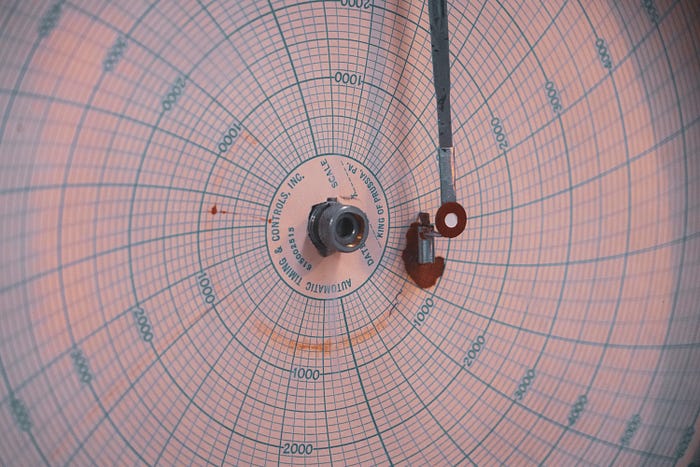Unlocking the Potential of Open-Source Graph Database NebulaGraph
Written on
Chapter 1: Understanding Graph Databases
Data is omnipresent and can be stored in various formats. With technological advancements, data storage has evolved beyond traditional tables to include more complex structures. One such format is the graph database, which organizes data in a graph-like structure.
A graph in this context refers to a mathematical representation that models relationships among entities. It comprises vertices (also known as nodes) linked by edges (lines). To illustrate, consider the following image:

Graphs can be enhanced into attribute or property graphs, which contain additional information attached to both vertices and edges. In a property graph, vertices can represent various labels, such as individual names or programming languages, while edges depict the nature of their relationships, such as frequency of interaction or proximity.
For instance, a property graph could represent the co-author relationships within the ArXiv network, showcasing how closely related different authors are.
Using property graphs in data analysis offers several advantages:
- They effectively illustrate relationships between data points.
- They can reveal hidden connections among vertices, particularly when new ones are introduced.
- They provide a more intuitive way for humans to interpret data relationships.
Given these benefits, graph databases have emerged as powerful tools for data representation and storage.
Section 1.1: How Graph Databases Function
Utilizing graph theory and property graph concepts, graph databases store data in a structure that prioritizes relationships. Unlike traditional databases that organize data in tables, graph databases utilize vertices for data entities and edges for their relationships.

The advantages of graph databases include:
- Emphasis on maintaining relationships between data points.
- Consistent performance regardless of the volume of data.
- Flexible schemas that allow for structural adjustments without compromising existing data.
- An agile approach that adapts easily to application changes.
Section 1.2: Graph vs. Relational Databases
When comparing graph databases to relational databases, several key distinctions emerge:
- Relational databases are structured in tables (rows and columns), whereas graph databases use vertices and edges.
- Relationships in relational databases are established through foreign keys, while graph databases rely on edges.
- Graph databases eliminate the need for complex join operations, simplifying data retrieval.
- Use cases for relational databases often focus on transactions, while graph databases emphasize relationship-heavy scenarios.
Both types of databases serve the purpose of data storage, but their applications vary based on specific needs.
Chapter 2: Introducing NebulaGraph
NebulaGraph is an open-source graph database designed to handle extensive graphs, featuring billions of vertices and trillions of edges with minimal latency. Its cloud-friendly, scalable, and resilient nature makes it an ideal choice for beginners and professionals alike.
The open-source aspect of NebulaGraph fosters community contributions and seamless integration with other projects. It has been successfully implemented in various sectors, including:
- Data lineage and governance.
- Financial risk management.
- Fraud detection.
- Intelligence assistance and search result optimization.
- Threat analysis and data insights.
The implementation of an open-source graph database can be particularly advantageous when clear use cases exist that require ongoing scalability.
This video, titled "The Distributed Open Source Graph Database - NebulaGraph," offers insights into the capabilities of NebulaGraph and its applications.
Installing NebulaGraph
Installing NebulaGraph on a local or cloud environment can be achieved through several methods outlined in its documentation. To set up NebulaGraph, ensure you are using a Linux or Ubuntu system.
The simplest installation route involves following the quick start guide to use the RPM or DEB package system. For my setup, I utilized Ubuntu 18.04.
Begin by downloading the necessary package using the following commands:
After downloading the DEB package, proceed with the installation:
sudo dpkg -i nebula-graph-3.2.1.ubuntu1804.amd64.deb
To start the NebulaGraph database, execute the following command:
sudo /usr/local/nebula/scripts/nebula.service
Next, you will need to install the Nebula console to run various commands. Obtain the release for Linux as follows:
Remember to change the permission to execute the console:
chmod 111 nebula-console
Utilizing the console can be initiated with the following command:
./nebula-console -addr 127.0.0.1 -port 9669 -u root -p root
For first-time users, you must add storage hosts:
ADD HOSTS 127.0.0.1:9669
If all steps are executed correctly, you will be ready to explore NebulaGraph. For visualization, consider using Nebula Studio with a sample dataset.
The second video, "The Open-Source Distributed Graph Database: Nebula Graph - Wey Gu - vesoft," provides further insights into the capabilities and features of NebulaGraph.
Exploring NebulaGraph
NebulaGraph employs a specialized query language known as nGQL (NebulaGraph Query Language), which resembles SQL and is tailored for graph pattern queries. If you are familiar with SQL, transitioning to nGQL will be straightforward.
For instance, to create a space in NebulaGraph, the following command is used:
CREATE SPACE basketballplayer(partition_num=15, replica_factor=1, vid_type=fixed_string(30));
To insert a vertex, you would use:
INSERT VERTEX player(name, age) VALUES "player100":("Tim Duncan", 42);
Adding an edge can be accomplished with:
INSERT EDGE follow(degree) VALUES "player101" -> "player100":(95);
Lastly, to read data, you can execute a GO query:
GO FROM "player101" OVER follow WHERE properties($$).age >= 35 YIELD properties($$).name AS Teammate, properties($$).age AS Age;
If you wish to experiment with NebulaGraph without any installations, you can access it through the online NebulaGraph Studio.
Conclusion
In summary, graph databases represent data using a graph structure, fundamentally differing from relational databases. They offer distinct benefits, such as maintaining data relationships, consistent performance, flexibility, and agility.
NebulaGraph stands out as an accessible tool for those looking to learn about graph databases or implement them professionally. Its open-source nature allows for easy scalability and resilience, making it suitable for a variety of applications, including handling vast amounts of data with minimal latency.
I hope this information proves valuable in your exploration of graph databases!